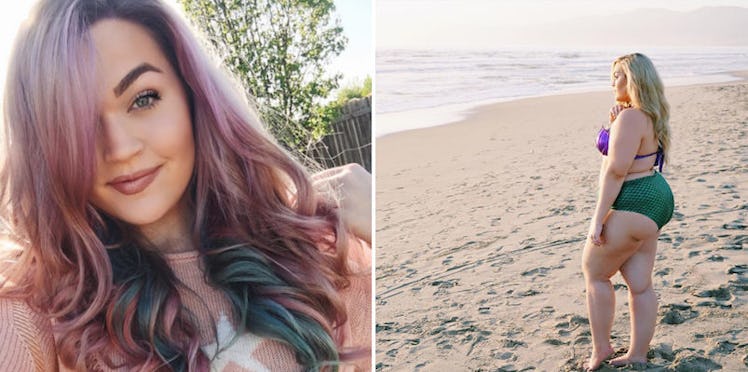
This Vlogger Just Nailed How Animated Disney Movies Teach Kids Body Shaming
Do you remember the first Disney princess who won your heart? Mine was Princess Jasmine in “Aladdin,” for her independence as well as her luscious braid and those jaw-dropping floor-length curtains on her balcony. Then, Pocahontas came along and all I wanted was a savvy pet raccoon to braid my hair. Remember this hair-braiding Barbie gem?
Looking back, what captivated me about the princesses were their wide eyes and hip-length hair, the way they always had tiny waists and seemed to float through every scene. Remember Meg from "Hercules"? Her ankles were, quite literally, the width of Herc's headband.
Vlogger Loey Lane also watched Disney's princesses with wide-eyed awe as a little girl. The only difference was she didn't see even a fraction of her body type represented on screen. No, when it came down to fitting the Disney mold, the plus-size little girl only found a body match in villains like Ursula from “The Little Mermaid."
Undeterred by Disney's body type of choice, Lane recorded a video in a mermaid-themed swimsuit. She called it the “The Not So Little Mermaid," launching into a bigger mission to change the way Disney portrays the female body.
According to Cosmopolitan, Lane is campaigning for a plus-size Disney princess that children of all sizes can relate to.
She explained in an interview,
We can't all look exactly the same and that's a huge reason why I think it's important for there to be more diversity in everything young boys and girls consume.
Disney has already started doing just that, expanding its princesses to fit a variety of races and roles. Instead of waiting for her Prince Charming, the princess at the heart of soon-to-be-released film “Moana” will get a plot that doesn't involve romance in the slightest.
Historically, the only way to tell a princess from a villain in an animated movie was to examine her body type. While heroines were all doe eyes and flowing gowns (ahem, Elsa), mean-spirited characters were either bloated (the Queen of Hearts, Ursula) or skeletal (Cruella de Vil, Yzma, Maleficent).
When Disney released a line of "designer" villain dolls, it even sparked criticism for making its characters twig-thin. Most recently, Disney's been accused of propagating stereotypes among the Polynesian characters in "Moana," depicting Polynesian men as morbidly obese.
As writer Joni Edelman points out in a Huffington Post blog, even 2015's mental health adventure “Inside Out” features a slim Joy next to a chunky, awkward Sadness. What are impressionable young viewers supposed to take away from that?
As Lane's message picks up steam, we'll be watching to see if Disney responds.
Citations: Why This Plus-Size Vlogger Is Calling on Disney to Create a Plus-Size Princess (Cosmopolitan)